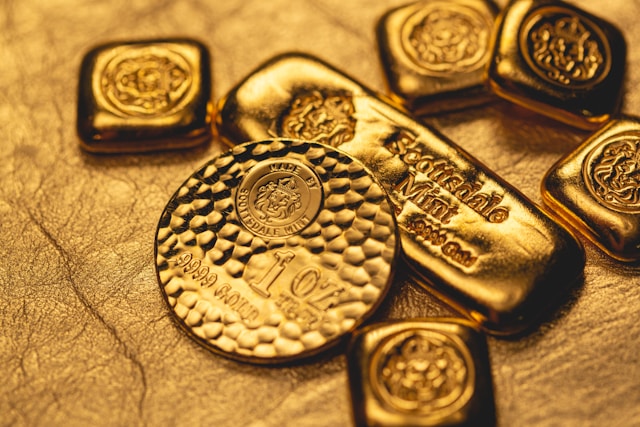Gold remains on edge, awaiting key minutes from central banks. The yellow market did tank below the 2300 an-ounce level at the start of the week amid growing expectations of hawkish US Federal Reserve minutes that would signal higher interest rates for longer. Likewise, the yellow metal came under pressure amid diminishing geopolitical tensions that had initially triggered strong demand for a safe haven.
Gold Prices Pull Back
After breaching the $2,300 an ounce support level, the precious metal dropped to lows of $2280 an ounce amid a buildup in selling pressure. The selloff was a natural adjustment on the precious metal rallying to record highs of $2431 an ounce, all but signalling overbought conditions. It was always expected that traders and investors would try to lock in profits after the meteoric rise, consequently lowering prices.
Despite the recent pullback, gold prices are still up by more than 10% for the year and remain locked in an uptrend. With the focus squarely on the results of a two-day Fed meeting, gold should remain volatile and susceptible to further losses should the central bank insist on sticking with higher interest rates for longer.
Higher interest rates result in a strengthened dollar, dropping gold prices. Additionally, a high-interest rate environment triggers strong demand for securities that yield, such as treasuries and bonds, consequently affecting demand for the precious metal. Strong inflation readings in recent weeks have seen traders steadily price out expectations of rate cuts, consequently affecting gold prices.
While high interest rates and diminishing geopolitical tensions have significantly affected gold prices, demand for the metal has remained strong. China, accounting for a fifth of total gold sales, has been the catalyst for higher gold prices. Unlike in the past, when high gold demand in China was driven mainly by middle-aged women looking to grow their gold nest eggs, Chinese gold shops are seeing strong demand from customers in their 20s.
China’s Strong Gold Demand
Xiaohongshu, a social media favourite with Gen Zs, has been a buzz of talk about precious metals. With youth unemployment rates at highs of 15%, most of them are opting to pump their savings into buying the precious metal. While most of them cannot buy the gold bar, most opt to buy it by the bean, which weighs about a gram and goes for about $80.
China’s central bank has also bought precious metals, fuelling strong demand and increasing prices. The central bank has been buying the metal for 17 straight months, and its holdings have risen by close to 16% over the same period.
Last year, the central bank bought 225 tons of the metal, and its reserves rose by 5 tons the previous month, taking its total stash to 2,262 tons. China’s central bank has been buying gold in plenty as one of the ways of bolstering its reserves. It also sees gold investments as one of the ways of diversifying its holdings away from the US dollar amid escalating tensions with Washington.
A Chinese economy struggling to recover post-pandemic and the Yuan depreciating by more than 5% against the dollar is also fuelling the demand for gold. Chinese consumers increasingly turn to precious metals to hedge against the weakness of the Chinese economy.


